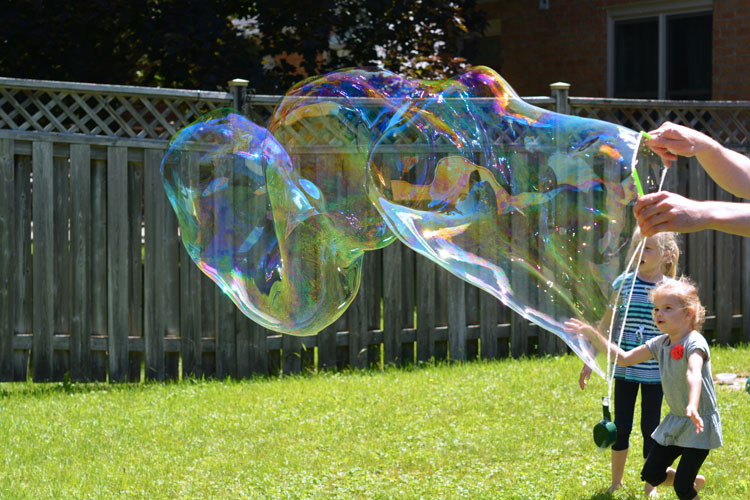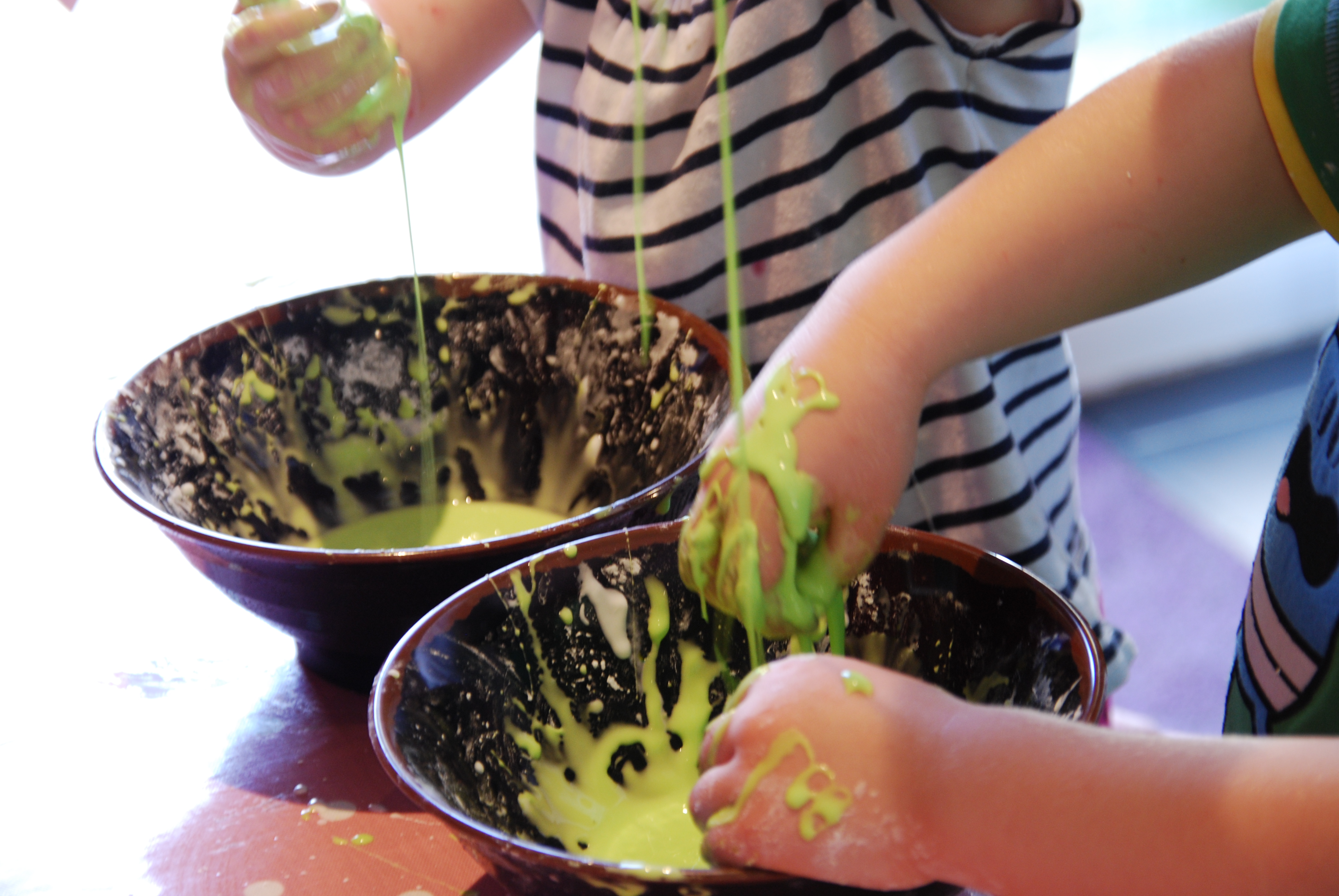
Fun STEM project ideas – Big Bubbles, Big Fun!
Bubbles are fun and all, but don’t they pop too quickly? Well, with a little chemistry, you can make a nifty solution that will have you making bigger, longer-lasting bubbles in no time!
What you’ll need:
- 6 cups of water
- 1/2 cup of blue Dawn dish detergent
- 1/2 cup of corn starch
- 1 tbsp of baking powder (not baking soda)
- 1 tbsp of Glycerine
- Bowl or container (for mixing everything)
- Bubble Wand
Once you have these ingredients, follow these 3 easy steps to start blowing the biggest bubbles:
- Dissolve the corn starch in the water. Make sure to stir well!
- Stir the rest of the ingredients in. Try and remove any froth that may be created.
- Let your solution sit for at least an hour, stirring it slightly when any corn starch starts settling on the bottom.
And there you have it! Get your bubble wand out, dip it into the solution, and start blowing bubbles!

Scientific Experiment: What Material Conducts Heat the Best?
To do this experiment, we need a thermometer. Want to make your own thermometer? Well, with Makeblock’s Neuron Kit it’s as easy as 1, 2, 3!
You’ll need the following:
- Power supply piece x1
- Temperature sensor piece x1
- OLED Display piece x1
- Paper or Notebook
- Disposable cup
- Iron chopsticks
- Wood chopsticks
- Transparent adhesive tape
Simply connect them together like the picture below and your thermometer is now ready for use!
Procedure:
- Collect at least 3 kinds of objects of the same size but of different materials (such as wooden chopsticks, plastic chopsticks, and iron chopsticks)
- Attach the temperature sensor on each object with tape. Make sure that the temperature sensor is attached to the same position on each object.
- Prepare 3 cups of the same size and pour the same amount of hot tap water into each cup.
- Turn on the timer and record the temperature sensor’s results once every 3 minutes.
- Record 3 sets of results.
Now you’ll be able to determine which material is the best conductor!
Hint: The higher the temperature, the better the conductor.

Exploding Lunch Bag
When it comes to science, one thing everyone loves is explosions. In this experiment you’ll be seeing how a simple chemical reaction can add a little pop to your boring afternoon!
What you will need:
- Ziplock sandwich bag (Ziplock freezer bags work the best)
- ¼ cup warm water
- 3 tbsp baking soda
- ½ cup vinegar
- Tissue
What to do next:
- Go somewhere where a little mess will be okay (kitchen sink/outside)
- Put the warm water into the sandwich bag
- Add the vinegar to the water in the bag
- Put the baking soda on a flat tissue and then fold it up
- For this one you are going to need to work fast — close the bag, leaving a corner open for the tissue to fit through.
- Now slip the tissue into the bag, close it and brace yourself!

Making Goo from Scratch
Make a squishy slime that’s fast and easy to make but will have you occupied for hours!
Goo Materials:
- 16-oz. Cornstarch
- 1 and ½ cups water
- Bowl for mixing
- Food coloring (optional)
Now we’re ready to goo!
- Empty the cornstarch into a bowl
- Add water to the bowl
- Now add food coloring for your desired color (no color is okay too)
- Mix all of this with your hands until it forms into goo
- Put the goo in the refrigerator when you’re done with it so it lasts!
Once you finish making it, you’ll notice that the goo is viscoelastic! This means that its viscosity (thickness) is determined by how it is handled. If you lightly pick up the goo, it will flow through your fingers but when you squeeze it, it turns hard and solidifies. #robots for kids #programmable robot
Sign up to receive the latest news about Makeblock directly in your inbox
…..Click here to see more stories about Makeblock and You